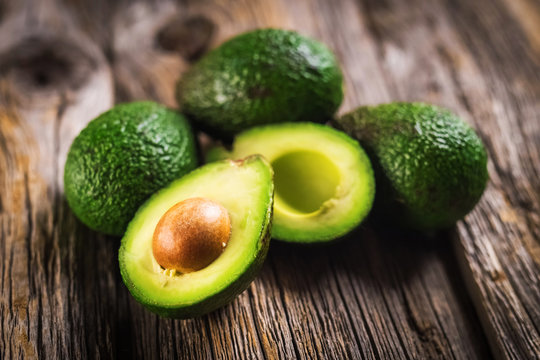Portion control and learning how to control overeating are arguably the most vital aspects of looking forward to attaining a suitable body weight and then maintaining it. Understanding how to control portion size and incorporating intermittent fasting can go a long way toward improving your efforts to lose fat, particularly the dangerous belly kind. This simple, fully detailed guide equips you with tips and strategies for taking control of your eating and optimizing your health.

Understanding Overeating
What is Overeating?
Overeating means consuming more food than your body needs for energy requirements. It can be caused by eating emotionally under stress, when somebody is bored, or eating socially. The first step in controlling overeating is identifying the triggers or patterns.
Health Consequences of Overeating
Overeating has many harmful health impacts and complicates one’s life through weight gain, gastric problems, and predisposition to chronic ailments, such as diabetes and heart conditions. It worsens one’s mental condition with feelings of guilt and low self-esteem.
Strategies to Control Overeating
How to Control Overeating: Practical Tips
- Mindful Eating Practices: Observe your food, chew slowly, and listen to the hunger and fullness cues of your body. It will help you take pleasure in your meals more and reduce the likelihood of overeating.
- Find the Trigger: It gives you the ability to track your intake of food. This way, you can observe patterns and pinpoint certain situations that pose as triggers to overeating, and therefore find healthier ways to deal with the trigger.
- Eat healthily: plan your meals, eat at regular times, and consume nutrient-dense foods such that the fullness you get from each meal lasts longer.
The Role of Portion Sizes in Controlling Overeating
- Understand portion size and serving sizes: A portion intake is the total amount of food one decides to eat, while a serving size is a measured or weighed amount one should eat. Knowing the difference can help you make better choices in purchasing and eating foods.
- Simple Effective Tips on Portions Management: A few tips are using small plates, measuring food portions, and not eating straight from the bag. These are just simple changes that can help you be more mindful of your portions and not overeat.
- Tools and Resources to Help with Portion Control: There are many apps and tools developed that help you track your portions and stay on course with your eating goals.
Intermittent Fasting for Fat Loss
Introduction to Intermittent Fasting
Intermittent fasting is an eating pattern switching between eating and fasting. It has led to a recent surge of interest in the potential effects it may hold for weight loss and general health.
Intermittent Fasting For Belly Fat Reduction
- How Intermittent Fasting Targets Belly Fat: Intermittent fasting helps to decrease the insulin level drastically, increase the level of growth hormones, and facilitate the burning process of fat.
- Scientific Evidence to Use Intermittent Fasting for Belly Fat Loss: Studies have shown that intermittent fasting can be effective in reducing belly fat and improving metabolic health.
Intermittent Fasting for Overall Fat Loss
- How Intermittent Fasting Works to Help with General Fat Loss: Intermittent fasting helps an individual consume fewer calories, boosts the metabolism, and allows the body to burn more fat.
- Compare Intermittent Fasting with Other Fat Loss Methodologies: Intermittent fasting is as good as, or better than, most other traditional calorie-restricted diets. Intermittent fasting provides flexibility and thus may be easier in the long run to achieve success.
Combining Portion Size Control with Intermittent Fasting
How to Integrate Portion Control with Intermittent Fasting
- Ways to integrate both effectively: Plan your meals and snacks around your fasting periods. Make sure that they are all nutrient-dense, portion-controlled foods.
- Meal planning with portion sizes while performing intermittent fasting: Focus on a balanced meal—have protein, healthy fats, and fiber to keep you full and satisfied.
Success Stories and Case Studies
Real-life examples can provide motivation and inspiration. Many have controlled their overeating and eventually shed fat through portion control combined with intermittent fasting.
Practical Tips and Tools
Using Technology to Control Overeating
- Portion and Fasting Monitoring Apps and Gadgets: Many applications can not only help you monitor your food intake but can also monitor your portion sizes and fasting windows.
- Online Support Resources and Communities: Join online communities and forums to share discourses that can give you help, advice, and motivation from people like you going through the same journey.
Healthy Recipes and Meal Ideas
- Balanced Meal Recipes with Portion Control: Look for recipes focused on balanced nutrition and proper portion sizes to help keep you on track.
- Intermittent Fasting Meal Ideas to Target Belly Fat: Protein, healthy fats, and fiber will be the essentials that are included in the meal ideas to continue intermittent fasting and increase targeting belly fat.
Maintaining a Healthy Lifestyle
Long-term Maintenance of Controlled Eating Habits
- Sustainability of Healthy Portion Sizes and Fasting Habits: The first key thing to keep in mind is gradually developing consistency. Initiate small alterations in your eating practices that you can realistically live with in the long term.
- Long-Term Commitment: Keep in mind that losing weight or leading a healthy lifestyle is something that cannot happen overnight. Therefore, be patient and stay focused on your set goals.
Addressing Challenges and Setbacks
- Common Challenges of Not Overeating and Sticking to Intermittent Fasting: Challenges are expected along the journey. Notice what might interfere and look for ways to overcome those barriers.
- Tips to Keep You Going: Keeping your goals in mind, getting support from friends and family, and celebrating every small victory are the three major elements for overcoming obstacles and staying inspired.
Conclusion
Get control of overeating and portion sizes, and finally include intermittent fasting to escalate the action toward fat loss, particularly belly fat. Knowing your eating habits and using practical strategies with commitment will keep you on track toward a healthier and sustained lifestyle. Begin your steps today and reclaim the driver’s seat for your health and well-being.
FAQs
How can I prevent myself from overeating when stressed?
- For stress management, try physical activities, meditation, talking to a friend, and not eating.
How much is the right size for the different types of food portions?
- Visual examples include a deck of playing cards for proteins, a tennis ball for carbohydrates, and a thumb for good fats.
In what way can intermittent fasting help to decrease belly fat specifically?
- It works primarily by reducing belly fat: through reduced insulin levels, increased growth hormones, and higher amounts of burning fat.
Can I mix another diet with intermittent fasting?
- Yes, it can be mixed. With diets like keto or low-carb, you are free to do so but always in constant consultation with a professional.
How long will it take intermittent fasting to work in reducing fat?
- The results may vary, and most people start to notice a change within a few weeks to a few months, depending on adherence levels and individual metabolism.
With these concepts, you can now control overeating, regulate portion sizes, and use intermittent fasting accordingly to achieve your fat loss goal. Keep your eyes on the prize, be patient, and enjoy this journey of health improvement.











